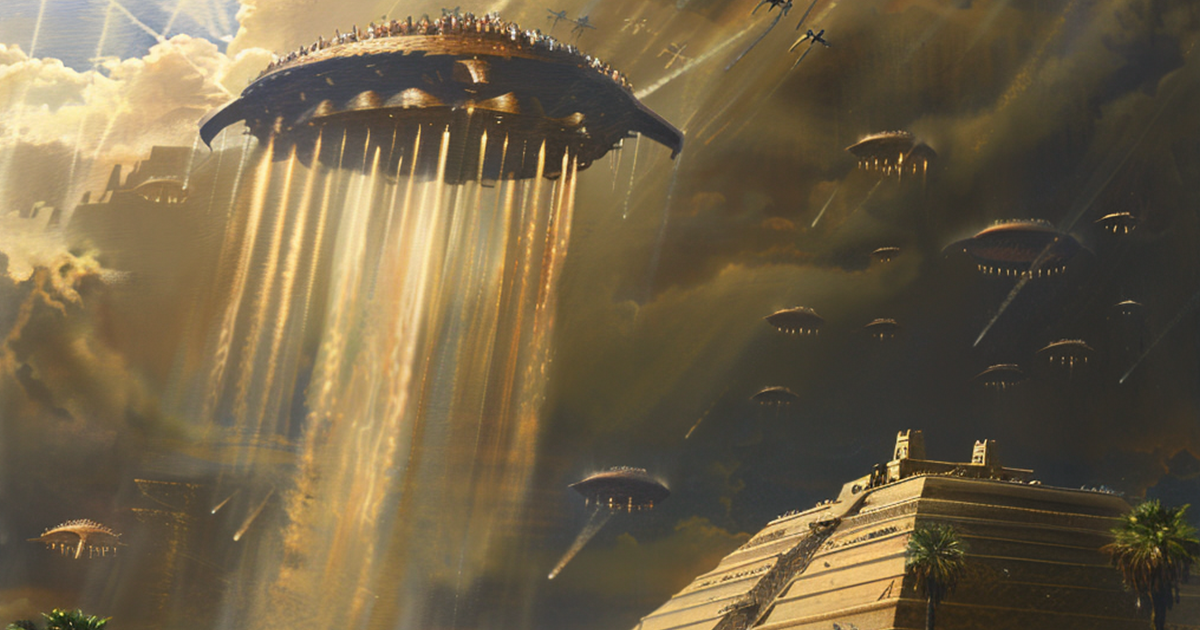Deep within the mysterious narratives of Sumerian legend lie complex stories of divine beings ruling over the earth and shaping the fates of humanity. The captivating tapestries of Sumerian mythology tell tales of supernatural entities descending from the skies, sparking conversations about potential extraterrestrial interactions in ancient times. Immersing oneself in these myths offers a fascinating peek into the beliefs and perspectives of one of the earliest human civilizations, prompting contemplation on the idea of otherworldly influences shaping historical eras.
At the heart of Sumerian mythology are the celestial gods and goddesses who are said to dwell in the ethereal realms. These cosmic beings played crucial roles in Sumerian cosmology, overseeing various aspects of nature and human existence. Among the notable celestial figures in the Sumerian pantheon are Anu, the god of the heavens, along with his offspring Enlil, the deity of the skies, and Enki, the patron of water and wisdom.
A prevalent theme in Sumerian mythology revolves around these divine beings descending from the celestial spheres to interact with mortals. Ancient texts like the “Enuma Elish” and the “Epic of Gilgamesh” depict gods descending in fiery chariots known as “shamash,” emitting flames and smoke. The parallels drawn between these descriptions and modern UFO accounts have sparked discussions about potential extraterrestrial origins.
Supporters of the hypothesis suggesting extraterrestrial interventions based on Sumerian lore argue that the consistent portrayal of divine descents across various cultures and epochs hints at a shared experience that transcends time and space. They suggest that interactions with advanced beings from distant realms influenced these mythical narratives.
Moreover, proponents of this view highlight the advanced knowledge and technology possessed by the Sumerians, theorizing that encounters with extraterrestrial visitors could have propelled their advancements. Some attribute the Sumerians’ progress in fields like astronomy, mathematics, and irrigation to external stimuli, proposing that the deities of Sumerian mythology were beings from distant lands who shared their wisdom.

In addition to textual evidence, scholars point to archaeological findings to bolster the argument for ancient extraterrestrial encounters. Discoveries of artifacts depicting figures wearing what seem to be spacesuits or helmets have fueled speculations about exchanges between ancient civilizations and beings from beyond this world. Similarly, ancient depictions of strange aerial objects or structures resembling spacecraft in artworks have added to the discourse on possible cosmic interactions.
However, skeptics present alternative views on Sumerian mythology, urging caution against overly literal interpretations from a contemporary standpoint. They suggest that the deities in these myths symbolize natural elements or abstract concepts rather than physical beings from distant galaxies. The descent of celestial beings may be interpreted metaphorically or symbolically rather than concrete proof of encounters with extraterrestrial life forms.
Moreover, critics emphasize the importance of understanding Sumerian mythology within its cultural and religious context. In ancient Mesopotamian society, gods played essential roles in religious rituals, and myths often served to explain natural occurrences or justify social structures. Therefore, the depiction of gods descending from the heavens may have been a means to reinforce the supremacy of the divine or legitimize political systems rather than a literal account of encounters with alien beings.
An alternate interpretation of Sumerian myths suggests that the descent of celestial beings symbolizes humanity’s innate curiosity and desire for exploration. From this perspective, the celestial deities represent the mysteries of the universe, with their descent symbolizing humanity’s relentless pursuit of knowledge and understanding of the cosmos.
In conclusion, the unraveling of Sumerian myths featuring celestial entities descending from the skies remains a topic of ongoing debate and speculation among scholars and enthusiasts alike. Whether these stories stem from real encounters with extraterrestrial beings, symbolic representations of elemental forces, or reflections of human curiosity and creativity, one thing is certain – the myths of ancient Sumeria continue to captivate and inspire awe, encouraging us to ponder the enigmas of the universe and our place within it.
